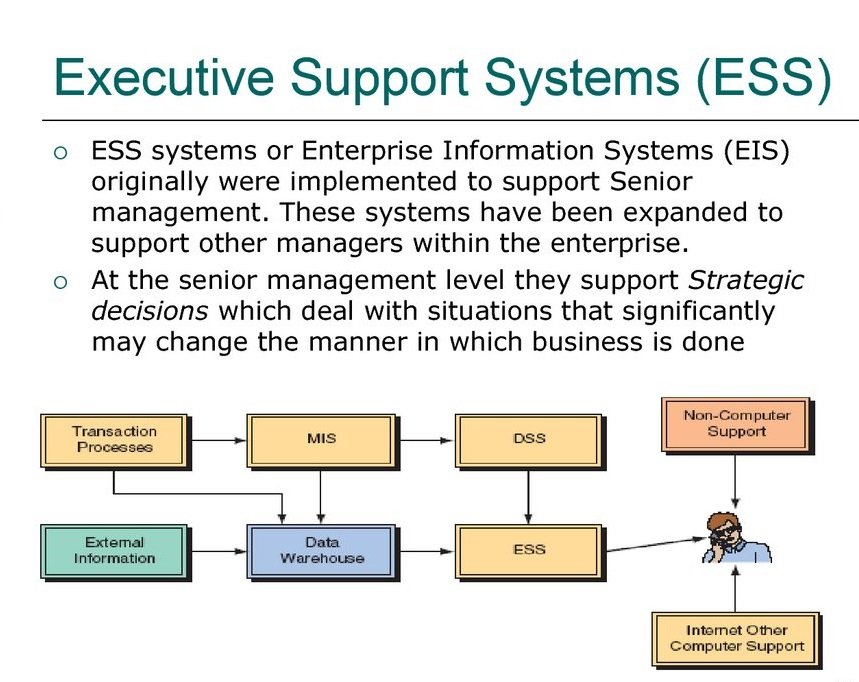Executive Support Systems
16/02/2020An Executive Support System (ESS) is software that allows users to transform enterprise data into quickly accessible and executive-level reports, such as those used by billing, accounting and staffing departments. An ESS enhances decision making for executives.
ESS is also known as Executive Information System (EIS).
An ESS facilitates access to organized enterprise and departmental data while providing analysis utilities and performance assessment predictors. An ESS provides potential outcomes and quick statistical data that are applied to decision making processes.
Ultimately, ESS reporting tools and results are contingent on developer and industry application. For example, Cambridge Systematics, Inc. built an ESS that is integrated with the investment plan for the Ministry of Transportation in Canada. This ESS version includes features that contrast the version used by Medical Information Technology, Inc. (MEDITECH).
EIS emphasizes graphical displays and easy-to-use user interfaces. They offer strong reporting and drill-down capabilities. In general, EIS are enterprise-wide DSS that help top-level executives analyze, compare, and highlight trends in important variables so that they can monitor performance and identify opportunities and problems. EIS and data warehousing technologies are converging in the marketplace.
In recent years, the term EIS has lost popularity in favor of business intelligence (with the sub areas of reporting, analytics, and digital dashboards).
Executive Support System (ESS) is a reporting tool (software) that allows you to turn your organization’s data into useful summarized reports. These reports are generally used by executive level managers for quick access to reports coming from all company levels and departments such as billing, cost accounting, staffing, scheduling, and more.
In addition to providing quick access to organized data from departments, some Executive Support System tools also provide analysis tools that predicts a series of performance outcomes over time using the input data. This type of ESS is useful to executives as it provides possible outcomes and quick reference to statistics and numbers needed for decision-making.

Advantages of Executive Support Systems
- Easy for upper level executive to use
- Ability to analyze trends
- Augmentation of managers’ leadership capabilities
- Enhance personal thinking and decision-making
- Contribution to strategic control flexibility
- Enhance organizational competitiveness in the market place
- Instruments of change
- Increased executive time horizons.
- Better reporting system
- Improved mental model of business executive
- Help improve consensus building and communication
- Improve office automation
- Reduce time for finding information
- Early identification of company performance
- Detail examination of critical success factor
- Better understanding
- Time management
- Increased communication capacity and quality
Disadvantage of Executive Support Systems
- Functions are limited
- Hard to quantify benefits
- Executive may encounter information overload
- System may become slow
- Difficult to keep current data
- May lead to less reliable and insecure data
- Excessive cost for small company